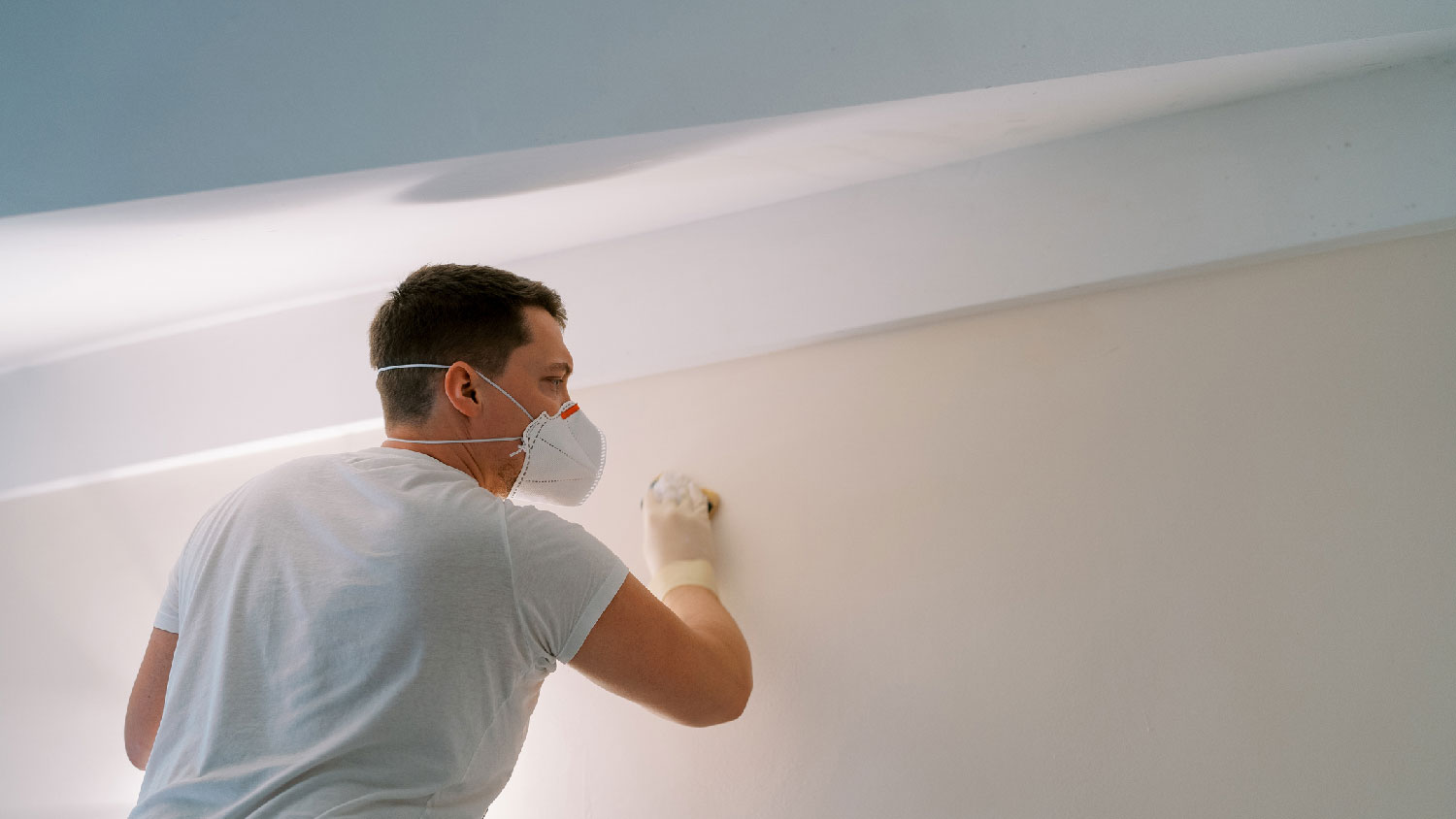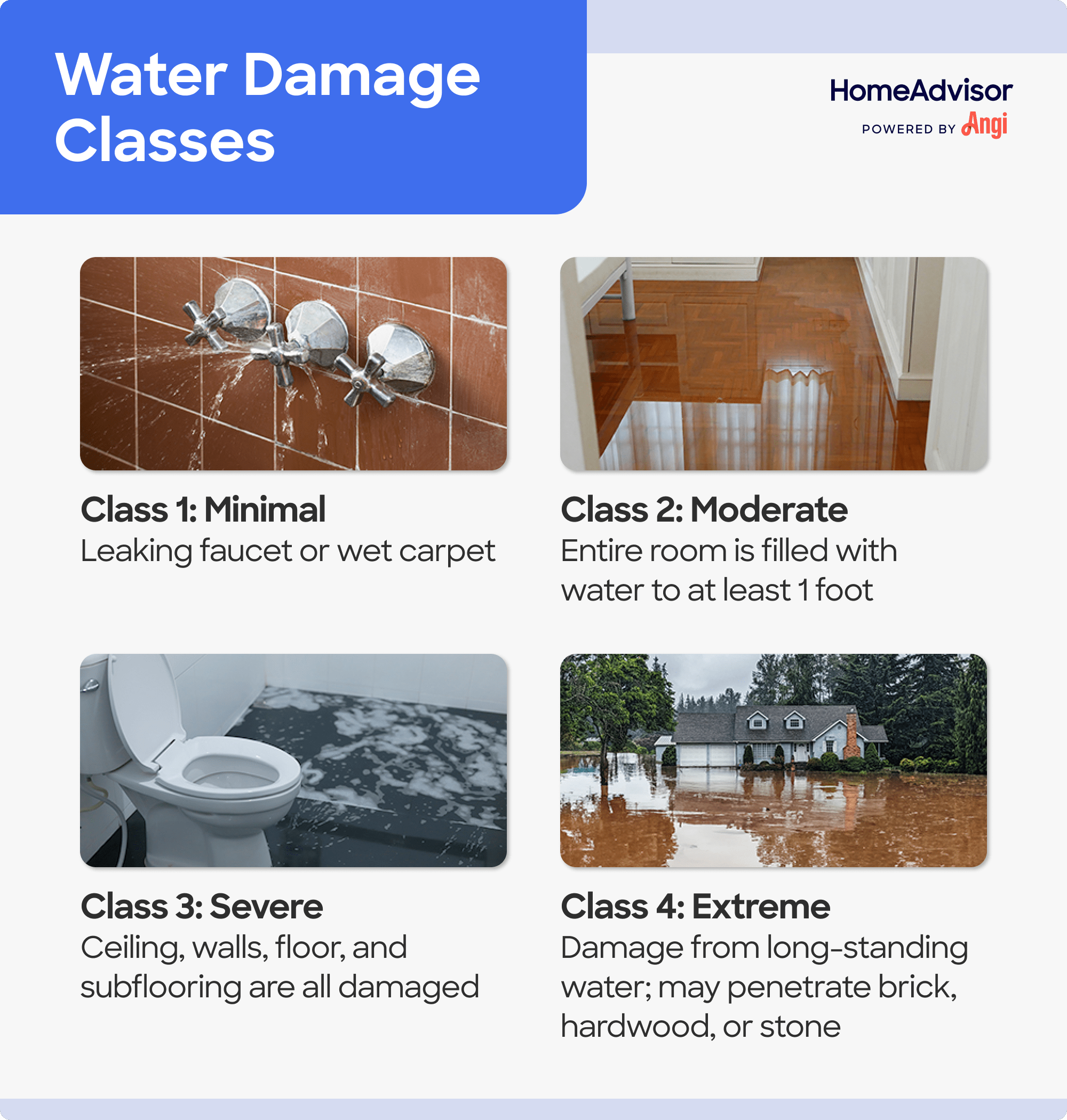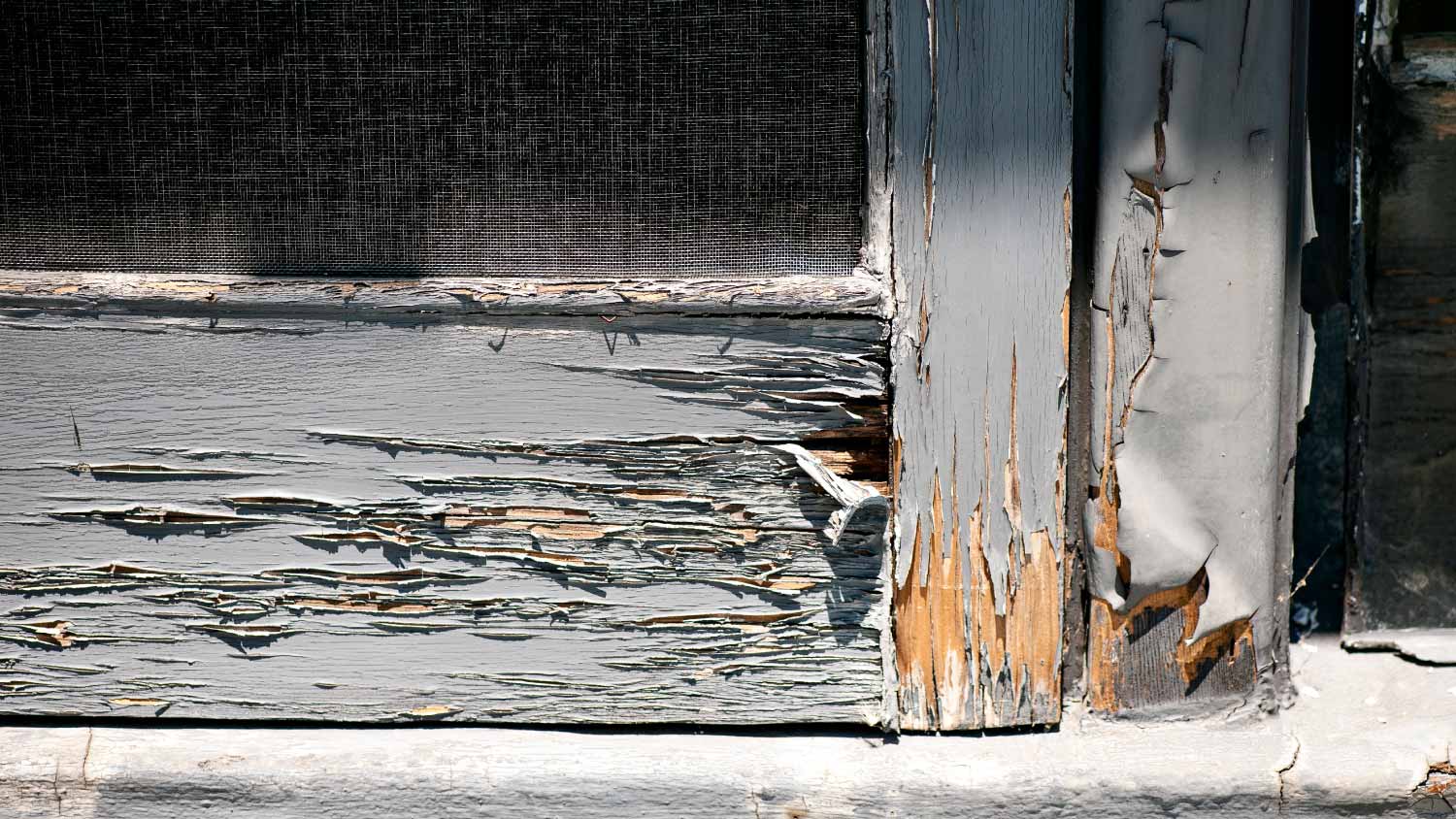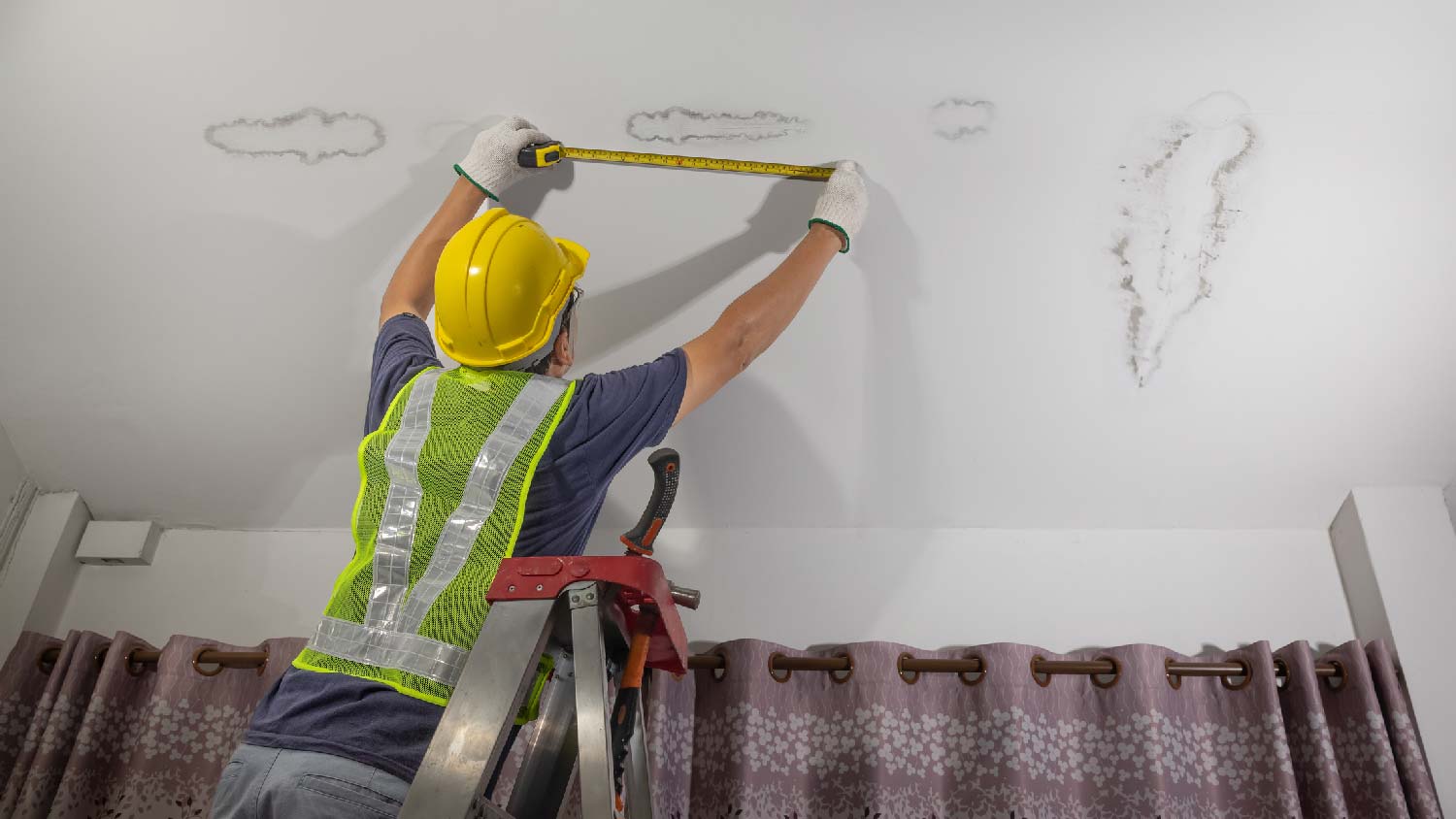
Learn who to call for smoke damage restoration. See why a smoke restoration company is best, what they do, and typical costs
This project can cost anywhere from $450 to $16,000, so take a look at what could affect this price and get a quote from a pro.


Water damage restoration costs an average of $3,865, with most homeowners spending between $1,385 and $6,382.
Costs vary based on the severity and class of water damage as well as the type of water involved.
Additional expenses may include mold remediation and repairs to structures and fixtures.
Timely water damage restoration can prevent further structural damage and health risks like mold growth.
Hiring a professional ensures proper assessment and cleanup, reducing the likelihood of costly future repairs.
This article was updated using automation technology and thoroughly reviewed for accuracy by HomeAdvisor Editor Ryan Noonan.
On average, water damage restoration costs homeowners $3,865, with most spending between $1,385 and $6,382 in 2025. Whether it’s a leaky roof, burst pipe, or flooding, water damage can cause serious issues in your home. Budgeting for professional water damage restoration is crucial to prevent further structural damage and health risks like mold growth. Costs can vary based on factors like the size of the affected area and the type of water involved. You can expect to pay between $3.50 and $7.50 per square foot, depending on the water category. Remember to document any water damage for insurance claims as you work with your water damage restoration pro.

Your water damage restoration pro will start by determining the source of the water damage, assigning classifications based on how clean the water is and its contact with contaminants like dirt, grime, or sewage. Only a licensed professional can properly categorize and classify water damage, and many insurance companies won't accept DIY assessments when processing claims. Acting quickly is essential, as Category 1 damage can quickly escalate to Category 2 or beyond.
| Water Damage Category | Average Price Range per Square Foot for Restoration Service |
|---|---|
| Category 1 (Clean water) | $3.50 |
| Category 2 (Gray water) | $5.25 |
| Category 3 (Black water) | $7.50 |
Clean water is the easiest to dry, so you’ll pay around $3 to $4 per square foot for this service. However, drying is just the first step in the restoration process, since related repairs depend on the materials affected. For example, repairing and cleaning carpets costs around $1 to $11 per square foot, and repairing drywall costs around $1 to $3 per square foot. Clean water doesn't pose a health risk, as it hasn't come into contact with chemicals or sewage—though it can cause structural damage if left unchecked. Damage from clean water often starts with your home's water sources. Common causes include:
Leaky faucets: Faucets, pipes, and fittings can leak unnoticed for long periods.
Leaky toilet tanks: Toilet tanks may spring leaks, leading to clean water damage.
Rain and sprinklers: Water can enter your home through open windows, a leaky roof, or any cracks in your structure.
Burst pipes: Repair burst pipes immediately, as large amounts of water can turn a clean water issue into a more costly grey or black water problem.
Water heaters: Water heaters can leak or have burst pipes. Since the average heater lasts eight to 12 years, schedule yearly maintenance with a pro to ensure proper operation.
Grey water—also called sullage—includes harmful contaminants such as detergents, and these spills are more difficult to clean up than clean water. You’ll pay around $4 to $6.50 per square foot to dry and remediate the water, with additional costs to repair related damage. For instance, repairing hardwood damage related to grey water costs about $10 to $15 per square foot, while repairing plaster damage costs around $6 to $19 per square foot.
Though grey water hasn’t come into contact with sewage and fecal matter, it has come into contact with certain chemicals that pose some health risks. Additionally, grey water is the perfect place for bacteria and mold to thrive if left unchecked. Here are some common causes:
Overflowing appliances: When the dishwasher, washing machine, and related appliances overflow during use, they spill grey water that has come into contact with detergent, food, or dirty clothing.
Toilets: When toilets overflow while filled with urine or cleaning agents, this leads to a Category 2 grey water repair issue. Note that this doesn’t mean there’s any sewage backup.
Black water is the most notorious category for repair and cleanup. It costs around $7 to $7.50 per square foot to remove black water from the home, but this price doesn’t include repairing and replacing infected items.
Unfortunately, prices escalate further once a pro removes the water from the home. Anything the water touches—including upholstered furniture, beds, carpeting, clothing, and any porous building materials—absorbs contaminants, since black water has come into contact with sewage. In many cases, replacement is cheaper than restoration.
Also, this category poses serious health risks due to the level of bacteria found in black water. This type of damage often requires a qualified mold remediation crew.
There are several common causes of black water flooding:
Sewage backups from drains and septic systems
Leaks or tears throughout your plumbing system
Flooding from overflowing rivers, lakes, and contaminated groundwater
Secondary flooding created by powerful storm surges
In addition to category, pros also describe water damage by class. Whereas the category describes the source of the damage, the class type illustrates the level and extent of the damage. Consult with a pro to classify your damage correctly.
| Water Restoration Class Designation | Average Price Range for Water Damage Restoration |
|---|---|
| Class 1 | $150 – $400 |
| Class 2 | $500 – $1,000 |
| Class 3 | $1,000 – $3,000 |
| Class 4 | $20,000 – $100,000 |
Class 1 is the easiest and most budget-friendly to clean and restore, costing around $150 to $400. It means only a small part of a single room has water damage, with very little carpeting affected. If you're handy with DIY projects, you might handle Class 1 water damage yourself, but hiring a pro is always an option.
This indicates water damage throughout an entire room, including the walls up to at least 12 inches. Class 2 water damage restoration costs around $500 to $1,000 since it’s more time-consuming for a local water damage cleanup pro to handle, as moisture remains in the actual structure, carpeting, floors, and any nearby appliances and fixtures.
When water damage reaches nearly every part of one or multiple rooms—such as the ceilings, walls, subflooring, and insulation—it’s classified as a Class 3 issue. It costs around $1,000 to $3,000, with the prices escalating quickly since many of these structural materials require replacement.
Class 4 costs around $20,000 to $100,000 and is the most expensive class of water damage to restore and repair, as it derives from long-standing water such as a river flooding or hurricane storm surge. Class 4 water damage permeates structural materials like stone, brick, and hardwood and typically spreads throughout the home quickly.
Water damage doesn’t play favorites, infecting nearly every component, material, and fixture throughout a home. Each part experiencing water damage has varying costs for repair and restoration.
| Area of the Home | Average Price Range to Repair and Restore |
|---|---|
| Bathroom fixtures | $140–$800 |
| Floors | $200–$550 |
| Drywall | $300–$850 |
| Ceiling | $450–$1,600 |
| Roof | $400–$1,700 |
| Basement | $500–$80,000 |
| Plumbing | $1,000–$4,000 |
Fixing a leaky faucet costs around $150 to $350, but more severe issues with bathroom fixtures cost more to repair. For example, cleaning and repairing an entire 120-square-foot bathroom from water damage can cost as much as $3,000. Hiring a plumber costs an average of $300, and they'll diagnose any lingering bathroom issues related to water damage. Repair plumbing issues quickly, as many insurance plans don't cover damage due to ignored maintenance problems.
Repairing floors costs around $200 to $550. Due to permeability, some flooring types are more susceptible to water damage than others. For example, laminates and carpets soak up liquids quickly, leading to subfloor degradation. Hardwood does a bit better when coming into contact with water, while tiles are sometimes impervious to water damage. There are many causes of water-damaged floors, including flooding, leaks, and damaged pipes.
Repairing drywall costs about $300 to $850. These costs vary depending on the amount of water damage, as most drywall types require replacement when coming into contact with high moisture levels. Replacing drywall costs $1.50 to $3 per square foot and is recommended to minimize the chances of mold growth.
Repairing a ceiling costs around $450 to $1,600, with professionals charging around $75 per hour to fix a sagging ceiling caused by water damage. The overall price fluctuates depending on the severity of the damage and any issues that require repairs, such as broken pipes in the ceiling.
Repairing a roof costs around $400 to $1,700. Repair a leaky roof quickly, as damage can easily spread to other parts of the home. Leaky roofs are commonly caused by missing shingles, damaged flashing, ice dams during the winter, inadequate runoff, and structural damage. Insurance companies may require a professional inspection before paying for the repairs, which technicians can handle easily.
Repairing water damage and flooding in a basement depends on several factors, including the level of standing water, the extent of the damage, and any appliances and fixtures exposed to the damage. For instance, repairing a basement drain costs around $700 to $6,000, and removing one inch of clean water costs around $500 to $1,500. For two feet of water from sewage backup, the cost is $2,800 or more. This cost increases with higher levels of freestanding water and the presence of grey or black water versus clean water.
All told, the total cost to restore a basement from water damage ranges from around $500 for small leaks up to $80,000 for many feet of standing sewage water running throughout the house. Budget for more when your space has been hit by contaminated sources, like a river flood.
Repairing burst pipes is a crucial step in preventing future water damage and typically costs $1,000 to $4,000. In some cases, damaged pipes require a total replacement. Installing new pipes costs around $350 to $2,000, depending on their accessibility, overall length, and materials. Prevent burst and leaky pipes by hiring a local plumber to conduct a yearly inspection, as they'll suss out minor issues before they can cause serious damage.
Hurricanes and river flooding are common natural causes of water damage, as are high water tables and improperly graded ground. In some cases, massive amounts of water damage necessitate a sump pump repair or replacement, particularly in areas with high water tables. Installing a sump pump costs around $640 to $2,000, with an average installation price of $1,200. Other water damage preventive measures include installing a water alarm and regrading the ground near your home.
If you smell a musty odor, it’s a sign that you could have mold damage. Common places for mold growth include the kitchen, bathroom, crawlspace, attic, or air conditioning vent. A qualified mold inspector near you can test for mold and help determine next steps. Mold remediation is time-consuming and potentially dangerous work, best suited to experienced pros.
Removing mold costs around $1,100 to $3,400, with an average price of $2,225. A local mold testing expert will analyze your property to assess the presence of mold and what type exists in the home, then call in a local mold remediation expert if necessary.
You can handle small clean water leaks in one room yourself, but for anything more serious, it's best to call a local water restoration pro. Restoring your home after extensive water damage is best left to the professionals, as these jobs require specialized tools, safety equipment, and years of experience. With grey water and black water damage, there are serious health risks to consider. Before your contractor arrives, here are some helpful things you can do:
Open windows to increase ventilation
Remove wall hangings and furniture from the affected area
Turn off the power to your home if it's safe to do so
No place is more important than your home, which is why HomeAdvisor connects homeowners with local pros to transform their houses into homes they love. To help homeowners prepare for their next project, HomeAdvisor provides readers with accurate cost data and follows strict editorial guidelines. We surveyed thousands of real customers about their project costs to develop the pricing data you see, so you can make the best decisions for you and your home. We pair this data with research from reputable sources, including the U.S. Bureau of Labor Statistics, academic journals, market studies, and interviews with industry experts—all to ensure our prices reflect real-world projects.
From average costs to expert advice, get all the answers you need to get your job done.

Learn who to call for smoke damage restoration. See why a smoke restoration company is best, what they do, and typical costs

Who fixes wood rot? Learn who to call, when to hire a pro, and what it costs to repair damage and prevent future rot.

Wondering who to call when your house floods? Learn when to call 911, when to hire water damage restoration pros or plumbers, and the costs.

Find who to call for water leak in wall. Compare water damage restoration vs plumbers, see costs, and learn next steps to fix it fast

Who to call for a ceiling leak? Learn whether to hire a roofer or plumber, what to do first, and key costs before you book a pro

Everything you need to know about repairing water damage in your home, including who to call.